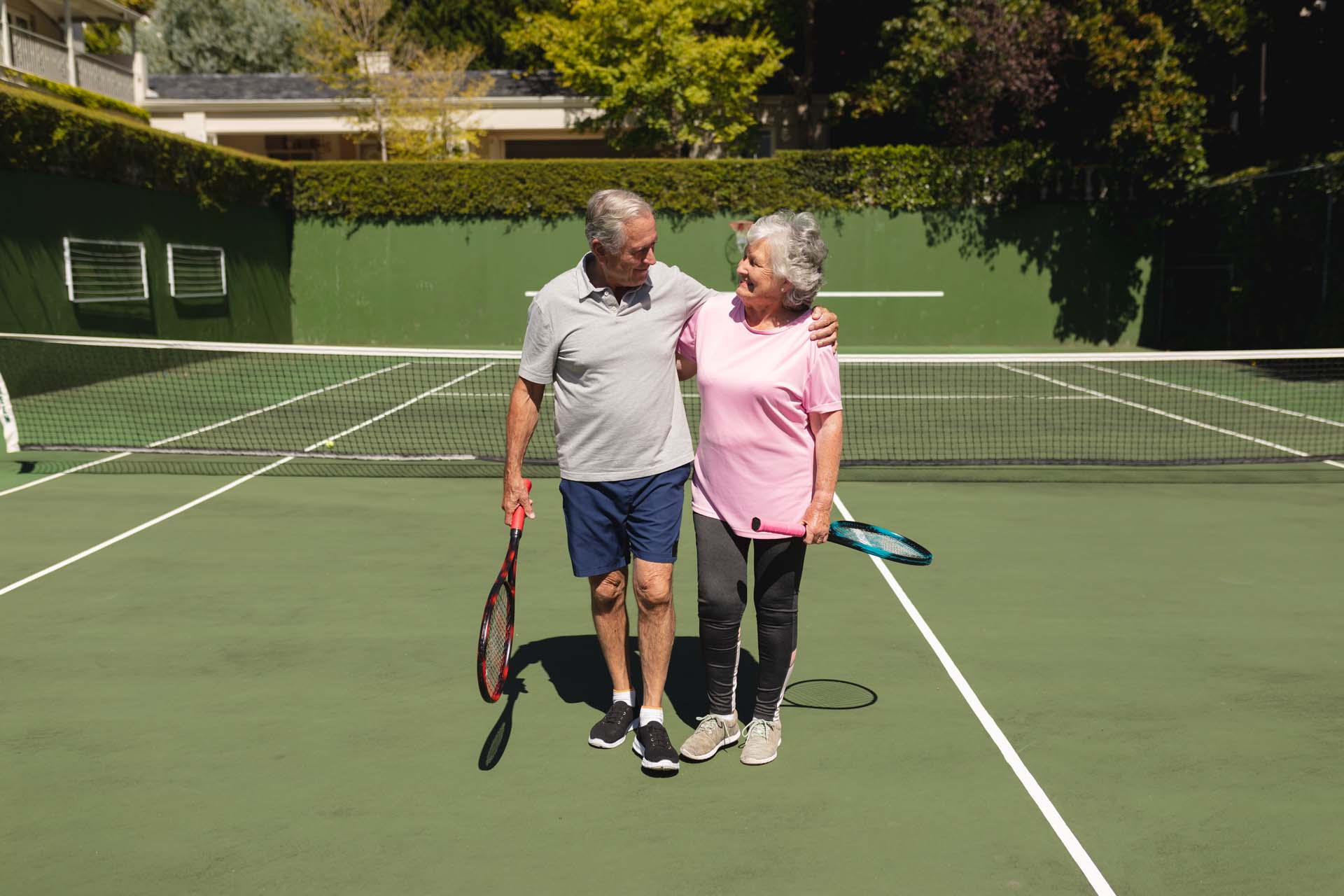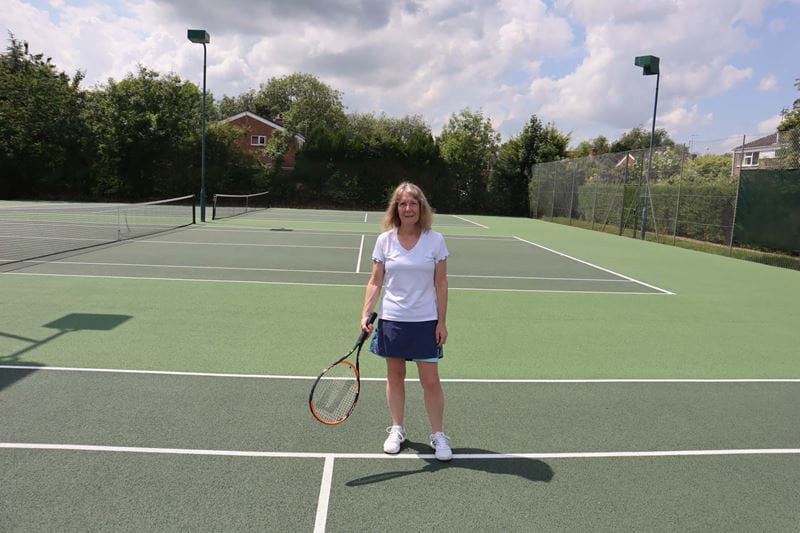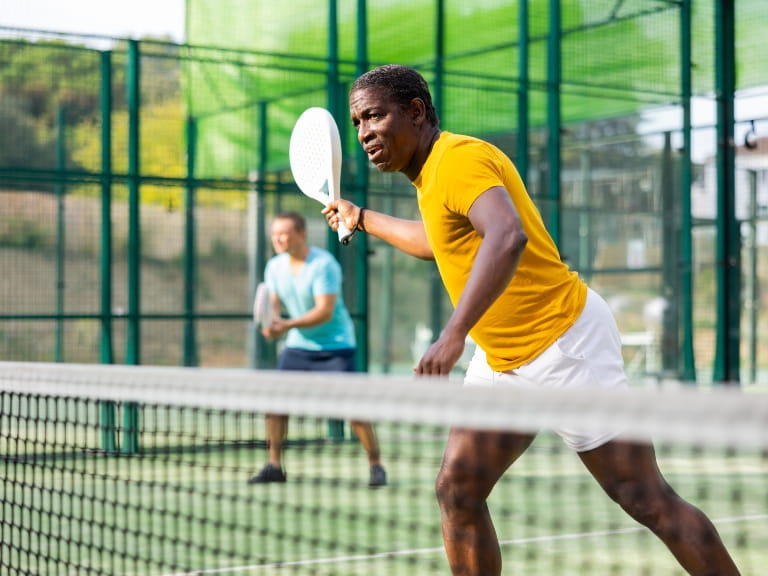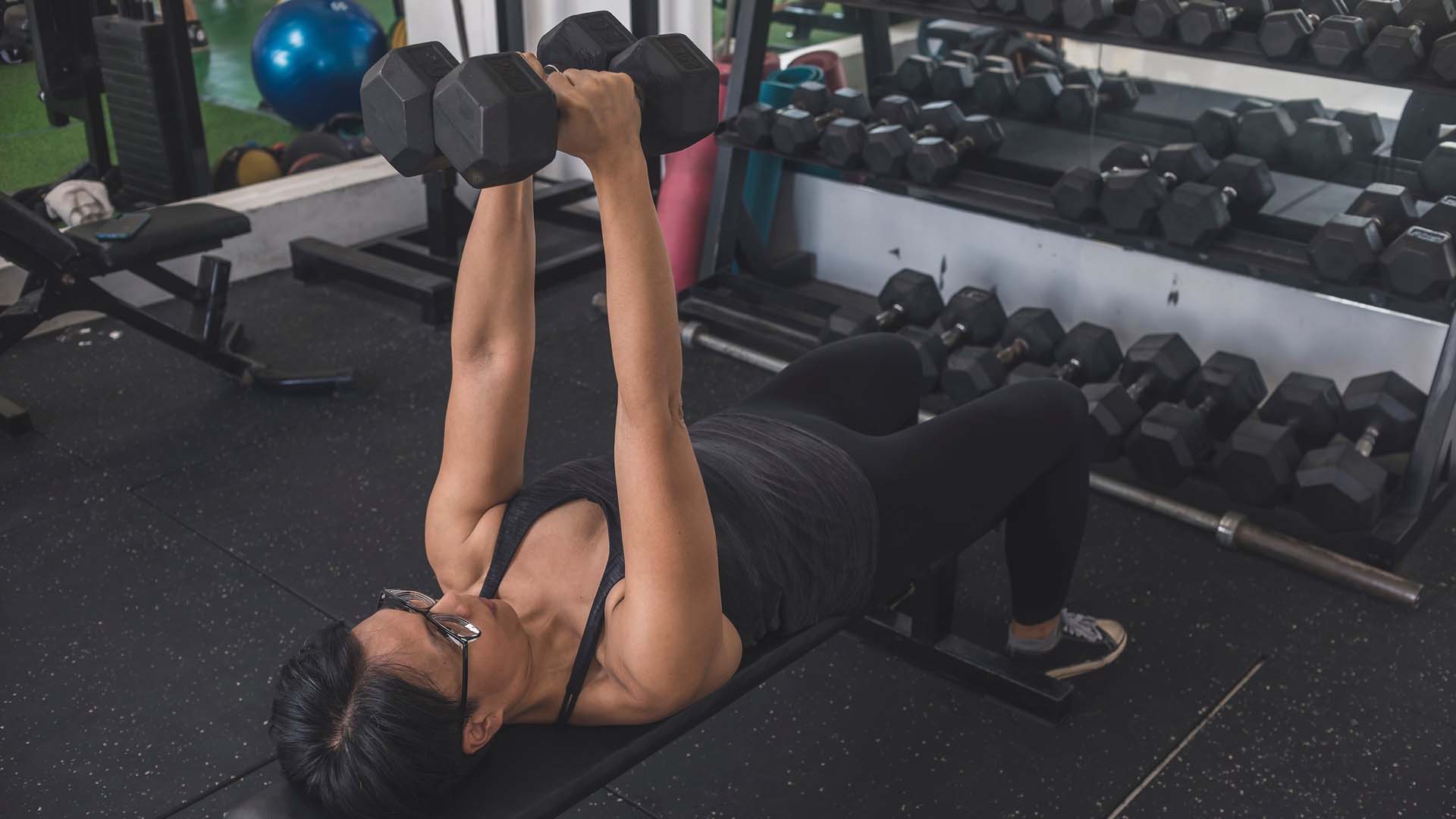
Whenever you take up tennis, you can be assured it’s a sport that welcomes everybody, regardless of age. Many clubs have a nimble 80-odd-year-old or two still playing, and winning matches.
And of course, it’s not just good for you physically; there are many benefits you can enjoy, from better strength to improved mobility. I know, because I may be in my sixties now, but I’m still reaping the rewards of my love of tennis.
Muscle mass and strength are affected by age, and we all get slightly weaker with the years, but tennis can help keep this in check. You’re constantly on the move, whether it’s running to get into position, stretching for a shot or ‘dancing’ on your feet in preparation to receive a ball.
Stronger muscles will not only lead to strong bones but will help reduce joint injuries. Exercise also improves balance, endurance and flexibility, and tennis can be a key player in boosting all three.
As a form of cardio exercise, it also makes your heart beat faster and transports oxygen around your body to fuel muscles. Did I mention that it will help lower cholesterol and burn more calories? That’s a win, win, win.
Learning a new skill sharpens mental agility and tennis has a lot to offer on this score too. Good hand-eye coordination is essential, combining awareness of your body positioning with the ability to work out where the ball should go.
Tennis also involves problem-solving, which is beneficial for brain health. Where will my opponent hit the ball? How can I get there in time? Where can I return the ball to create the best chance of winning the point? All of these questions and more need answering in the moment on court.
Socially, it’s a winner too. It’s impossible to play tennis on your own; you need at least one other person for singles, and three for doubles. That’s an increased local friendship circle, which could be mentally beneficial given that a recent report recently cited loneliness ‘as bad for health as smoking’.

You could spend hundreds of pounds on tennis gear, and down the road you might. But until you know this is the game for you, stick to the basics. These include:
First, a lightweight racket. A large head often suits beginners, offering more power and a bigger surface area to hit the ball.
Rackets come in different grip sizes. Look on the frame or handle bottom. A 4¼ in grip, for example, is the same as size 2, the alternative measuring system. Hold the racket on its side and grip the handle as if you’re shaking hands.
You should be able to get an index finger in the space between the ends of your fingers and the mount of your thumb. Too much space, you need a smaller grip; too little, a larger one. The wrong size could make your racket slip or even cause tennis elbow.
Senston Tennis Racket set of 2, RRP £58.99
Another essential is tennis-specific shoes. A good all-rounder shoe is best – offering comfort, ankle protection, sideways stability and plenty of cushioning – to provide the best combo of grip and robustness.
Then you’ll need some tennis balls (they’re typically sold in tubes of four), and some comfortable, breathable sportswear.
Before you dive into a match, here are some basic rules and things to look out for on the court:
A tennis court may look daunting, but each zone dictates where you stand at particular points. This can aid focus. It’s a large rectangle divided by a net.
All you have to do is get the ball over the net to land within the court confines (narrow length for singles and wider court, including tram lines, for doubles).
Stand behind the baseline on either side of the centre mark and serve into the service box diagonally opposite on your opponent’s side of the net. You have two chances to get the ball in. Your feet cannot touch or cross the baseline until you have hit the ball. The receiver may not hit the ball before it has bounced.
The server alternates the side of the court to serve from after each point, starting on the right. After each game, the service goes to the opposition, the order of service being maintained throughout.

If a first served ball hits the net and lands in the service box beyond, it's called a ‘let’. The server still has two chances to get the ball in.
If the ball hits the net but lands out or on the server’s side of the net, this is a chance used up to land the ball in the service box.
The scoring system defies logic, originally in increments of 15 points but now processing through 15, 30, 40 (not 45) to game. And ‘love’ stands for zero.
The key thing to remember is that the server’s score comes first. So ‘love-15’ would mean the side serving lost that point; ‘15-love’ would denote they won it. The lowest number of points needed to win a game is four but more likely both sides will win points.
If the score was: 15-love, 15-all, 15-30, 15-40, game, who won? The side serving or the side receiving?
A score of 40-40 is called deuce and at this point, a player or pair must win two consecutive advantage points to win, commonly called ‘Ad in’ or ‘Van in’ if the server wins the point, and ‘Ad out’ or ‘Van out’ if the other side do. If the next point is won by the other side, the score goes back to deuce.
Six games are the lowest number possible to win a set, 6-0. A set finishes with the first side to reach six, except at five-all when the first side to be two games clear takes the set.
However, at six-all, a tiebreak comes into play to limit the time and energy needed to finish the match. Opt to play an odd number of sets – one, three or five – to be sure of a clear winner.

Once you’ve got to grips with the court and basic rules of tennis, here are some top tips for building confidence and skill:
Consider, how much time per week do you want to block out for tennis? Booking courts ahead will encourage you play. Remember: the harder you practise, the luckier you’ll get!
Doing this on the tennis court will reinforce your knowledge of its layout. Here’s a great tennis warm-up:
Hold your racket like a frying pan, with a ball on the strings. Gently move the racket up and down, keeping its face parallel to the ground, until the ball starts bouncing. How long can you keep it going?
Now use the racket to keep it bouncing on the ground. Counting the number of bounces out loud can increase success. While you’re counting, you’re not overthinking the physical requirements needed.
Grab a partner. Stand either side of the net, just inside the service line, and keep a rally going as long as possible, each player shouting out the number of the shot they made. It’s not just about you getting it over the net but also learning to control the ball so your partner can return it.
Paul Larkins has been a sports journalist for more than 30 years, covering two Olympic Games, one Paralympics, numerous World Championships and, most recently, the Commonwealth Games in Birmingham in 2022. He’s also been a magazine editor, heading up titles covering everything from running to cooking and buying tractors.
But his real passion is running. As a former GB International athlete and sub-4-minute miler in the 1980s, Paul has a great understanding of life-long fitness and the benefits it can provide.









Your questions answered about what really is a good 5k time.